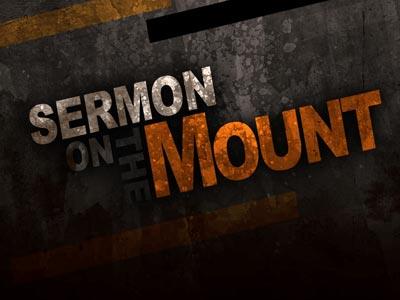-
The Sermon On The Plain: An Exposition Of Luke 6:17-38
Contributed by Mark A. Barber on Jan 30, 2019 (message contributor)
Summary: Jesus calls us to radical discipleship.
The Sermon on the Plain: An Exposition of Luke 6:17-38
Scholars debate whether this sermon is another version of the Sermon on the Mount. It indeed shares a lot of common themes. Scholars who want to diminish the authority of Scripture try to prove that both evangelists copied and arranged material from an earlier source. Whereas some of these sayings may have been genuine sayings of Jesus on several occasions, they have been redacted and put into another setting. Matthew is especially accused of this practice. But is this true? As a minister og the Gospel, I have been known to repeat sermons from time to time. These sermons were preached at different times and places, yet if one were to examine all of my sermons published at sermoncentral.com and other places will see common material. From a practical point of view then, I can see no reason to see that Jesus preached two sermons that are quite similar in different places and times. He taught on an almost daily basis for up to three years.
When one compares the two sermons, the one from Matthew is the longer and more complete. The sermon recorded in Luke is shorter. Luke is known to summarize sermons as can be seen in the book of Acts. At the Pentecost sermon, for example, It records that Pater made other like exhortations to the people which indicates the actually Pentecost address was actually longer. This may also have been the case here. Let us look further into this sermon.
The sermon is prefaced by Jesus, who had prayed all night on a mountain to choose His Apostles had come down to a level place. This is why this sermon is known as the “Sermon on the Plain.” The sermon recorded in Matthew occurs on a mountain. The sermon is preceded the by a large group of disciples and other people from all of Judaea and Jerusalem as well as the seacoast of what is today Lebanon. This sermon seems to have been delivered in the proximity of Lebanon, although we cannot determine whether it was in Judaea, Galilee, or Lebanon for certain. In comparison, the Sermon on the Mount gathered people from Galilee, Judaea, Decapolis and people from the other side of Jordan. So we can see that we are talking about two different locations and two different groups of people, What is in common though is that both Jews as well as Gentiles had come to hear Jesus and in this case to be healed by Him. The idea of “to the Jew first and also to the Greek did not begin with Paul, but with Jesus Himself.
The text goes on to say that Jesus was healing. He was healing those who were oppressed (literally “crowded”) by unclean spirits. The people in the crowd came up and tried to touch Him. When they did touch Him, power was coming out of Him, and they were all healed. The use of the imperfect tense indicates that this took some time and that these actions were individually repeated. There is a rabbinic legend that those who would touch the fringes of the garment of the Messiah would be healed. This may have been what some thought but we cannot be certain of this. What we do know is that all who touched Hime were healed.
Jesus always considered His teaching to be more important than His ministry of healing. He came to proclaim the acceptable year of the LORD. We see that the desire to hear Him precedes these miracles of healing and exorcism. Also, the amount of space given to these miracles is much less than that of the sermon Jesus was about to address them with.
Jesus, who had spent the previous night in prayer now looks upon His disciples. It is interesting that the sermon is addressed to disciples and not to the crowd which had come. Many people might have heard the words of Jesus who were not disciples. Jesus did not concern Himself with these. Only those who were truly disciples could understand the meaning of the words. The same is true today. Many think that they have heard the words of the gospel, but without faith, all these hear nothing but words. People take tha words of Jesus in all kinds of ways. To some, He is the ultimate pacifist. To others, He is a victim of religious prejudice. To others, He is the supreme liberator who overthrows the rich. The Sermon on the Plain is a favorite of those who seek economic justice. People read the words of Jesus and come up with all kinds of different ideas of what Jesus was about. If they are not disciples of Jesus Christ in the judgment of God and not of man, they do not understand Him at all. Martyn Lloyd-Jones mentions of how in Britain of the 1960’s that the political Jesus who brings justice through His teaching was in vogue. It did not matter whether Jesus actually said it or even lived. What mattered was the teaching. All we need to do is apply these teachings and justice and prosperity would come to all, Wars would end, and the kingdom of peace would arrive. Bonhoeffer opened the door to this along with others. Harvey Cox changed the idea of the City of God in Augustine to “The Secular City, a secularized version of the teaching of Jesus. But will human effort and adhering to the words of Jesus ever bring in the Kingdom?

 Sermon Central
Sermon Central



